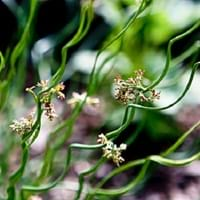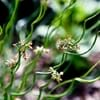Life Span
Perennial
Perennial
Type
Sedge or Rush
Vegetable
Origin
World/Pandemic, North America, Europe, Russia/Siberia, Africa, Asia
Mediterranean
Types
not available
Green Globe, Imperial Star, Tempo, Violetto, Symphony
Number of Varieties
Not Available
Habitat
All sorts of environments, Banks, ditches, marshes, Shores of rivers or lakes
Sandy areas
USDA Hardiness Zone
6-9
7-10
Sunset Zone
H1, 1a, 1b, 2a, 2b, 3a, 3b, 4, 5, 6, 7, 8, 9, 10, 11, 12, 13, 14, 15, 16, 17, 18, 19, 20, 21, 22, 23, 24
8, 9, 14, 15, 16, 17, 18, 19, 20, 21, 22, 23, 24
Habit
Clump-Forming
Rosette/Stemless
Flower Color
Brown
Purple
Flower Color Modifier
Bicolor
Not Available
Fruit Color
Non Fruiting Plant
Not Available
Leaf Color in Spring
Green
Gray Green, Silver
Leaf Color in Summer
Green
Gray Green, Silver
Leaf Color in Fall
Green
Gray Green, Silver
Leaf Color in Winter
Green, Tan, Sandy Brown
Not Available
Leaf Shape
Long hair-like leaves
Glandular
Plant Season
Spring, Summer, Fall, Winter
Spring
Sunlight
Full Sun, Partial Sun
Partial shade
Type of Soil
Clay, Loam, Sand
Well drained
The pH of Soil
Acidic, Neutral
Slightly Acidic
Soil Drainage
Poorly Drained
Well drained
Bloom Time
Early Summer, Summer, Late Summer, Early Fall
Early Fall, Fall
Tolerances
Drought
Drought
Where to Plant?
Ground, Pot
Ground
How to Plant?
Divison, reseeds
Seedlings, Transplanting
Plant Maintenance
Medium
Medium
Watering Requirements
Does not require regular watering
Form a Soil ring to water efficiently, Needs watering once a week, Water twice a day in the initial period
In Summer
Lots of watering
Lots of watering
In Spring
Moderate
Moderate
In Winter
Average Water
Average Water
Soil pH
Acidic, Neutral
Slightly Acidic
Soil Type
Clay, Loam, Sand
Well drained
Soil Drainage Capacity
Poorly Drained
Well drained
Sun Exposure
Full Sun, Partial Sun
Partial shade
Pruning
Prune to control growth, Remove damaged leaves, Remove dead branches, Remove dead leaves
No pruning needed in the early stages, Prune after flowering, Remove deadheads
Fertilizers
All-Purpose Liquid Fertilizer
All-Purpose Liquid Fertilizer
Pests and Diseases
Free of serious pests and diseases
Aphids, Gray mold, Powdery mildew, Root rot
Plant Tolerance
Drought
Drought
Flowers
Insignificant
Yes
Flower Petal Number
Single
Not Available
Fragrant Leaf
No
Not Available
Foliage Texture
Fine
Coarse
Foliage Sheen
Glossy
Matte
Attracts
Bumblebees, Flying insects
Butterflies
Allergy
Unknown
Intestinal gas
Aesthetic Uses
Informal Hedge, Woodland margins
Not Used For Aesthetic Purpose
Beauty Benefits
Not Available
Not Available
Environmental Uses
Air purification
Air purification
Medicinal Uses
No Medicinal Use
Anemia, High cholestrol, Kidney problems, Liver problems
Part of Plant Used
Not Available
Flowers, Fruits
Other Uses
woven into the covering of tatami mats
Can be made into a herbal tea, Used as primary flavor in Italian Liqours
Used As Indoor Plant
No
No
Used As Outdoor Plant
Yes
Yes
Garden Design
Bog Garden, Container, Mixed Border, Water Gardens
Not Available
Botanical Name
JUNCUS effusus f.Spiral
Cynara cardunculus
Common Name
Curly wurly
Artichoke
In Hindi
Corkscrew Rush
Artichoke
In German
Corkscrew Rush
Artischocke
In French
Corkscrew Rush
Artichaut
In Spanish
Corkscrew Rush
Alcachofa
In Greek
Corkscrew Rush
αγκινάρα
In Portuguese
Corkscrew Rush
Alcachofra
In Polish
Corkscrew Rush
Karczoch
In Latin
Corkscrew Rush
cactus
Phylum
Magnoliophyta
Anthophyta
Class
Liliopsida
Eudicotyledones
Family
Juncaceae
Asteraceae
Clade
Angiosperms, Commelinids, Monocots
Not Available
Tribe
Not Available
Cynareae
Subfamily
Not Available
Not Available
Number of Species
Not Available
Not Available
Importance of Corkscrew Rush and Artichoke
Want to have the most appropriate plant for your garden? You might want to know the importance of Corkscrew Rush and Artichoke. Basically, these two plants vary in many aspects. Compare Corkscrew Rush and Artichoke as they differ in many characteristics such as their life, care, benefits, facts, etc. Every gardener must at least have the slightest clue about the plants he wants to plant in his garden. Compare their benefits, which differ in many ways like facts and uses. The medicinal use of Corkscrew Rush is No Medicinal Use whereas of Artichoke is Anemia, High cholestrol, Kidney problems and Liver problems. Corkscrew Rush has beauty benefits as follows: Not Available while Artichoke has beauty benefits as follows: Not Available.
Compare Facts of Corkscrew Rush vs Artichoke
How to choose the best garden plant for your garden depending upon its facts? Here garden plant comparison will help you to solve this query. Compare the facts of Corkscrew Rush vs Artichoke and know which one to choose. As garden plants have benefits and other uses, allergy is also a major drawback of plants for some people. Allergic reactions of Corkscrew Rush are Unknown whereas of Artichoke have Intestinal gas respectively. Having a fruit bearing plant in your garden can be a plus point of your garden. Corkscrew Rush has no showy fruits and Artichoke has no showy fruits. Also Corkscrew Rush is not flowering and Artichoke is flowering. You can compare Corkscrew Rush and Artichoke facts and facts of other plants too.





